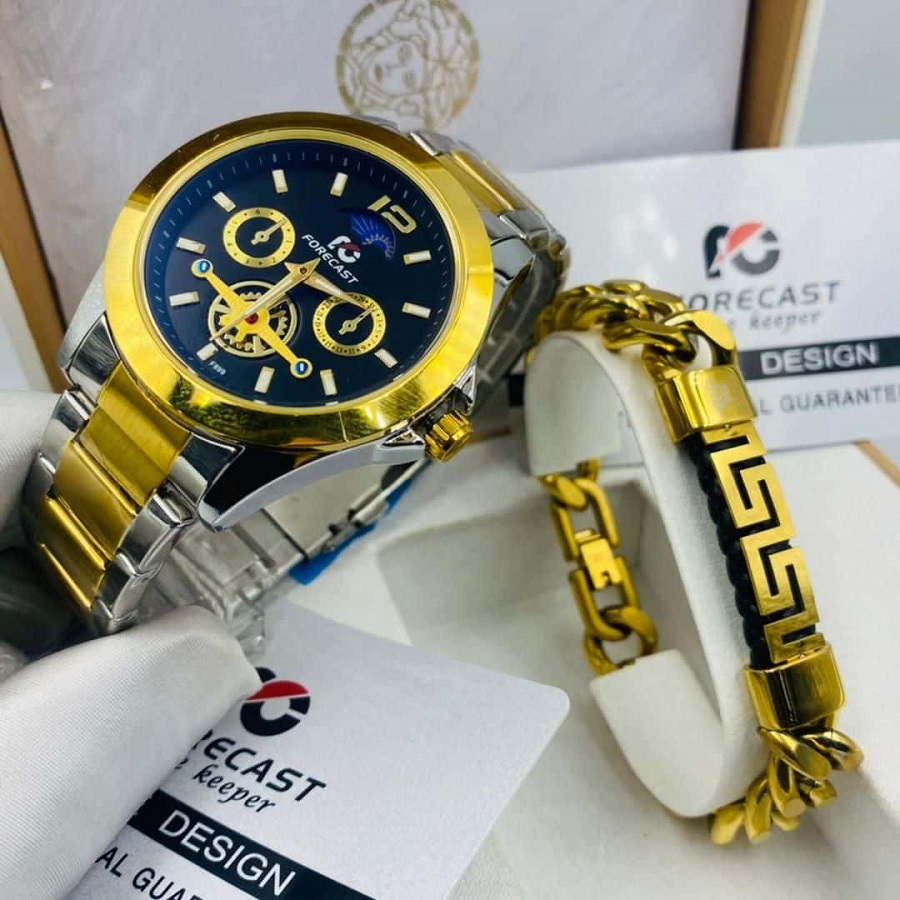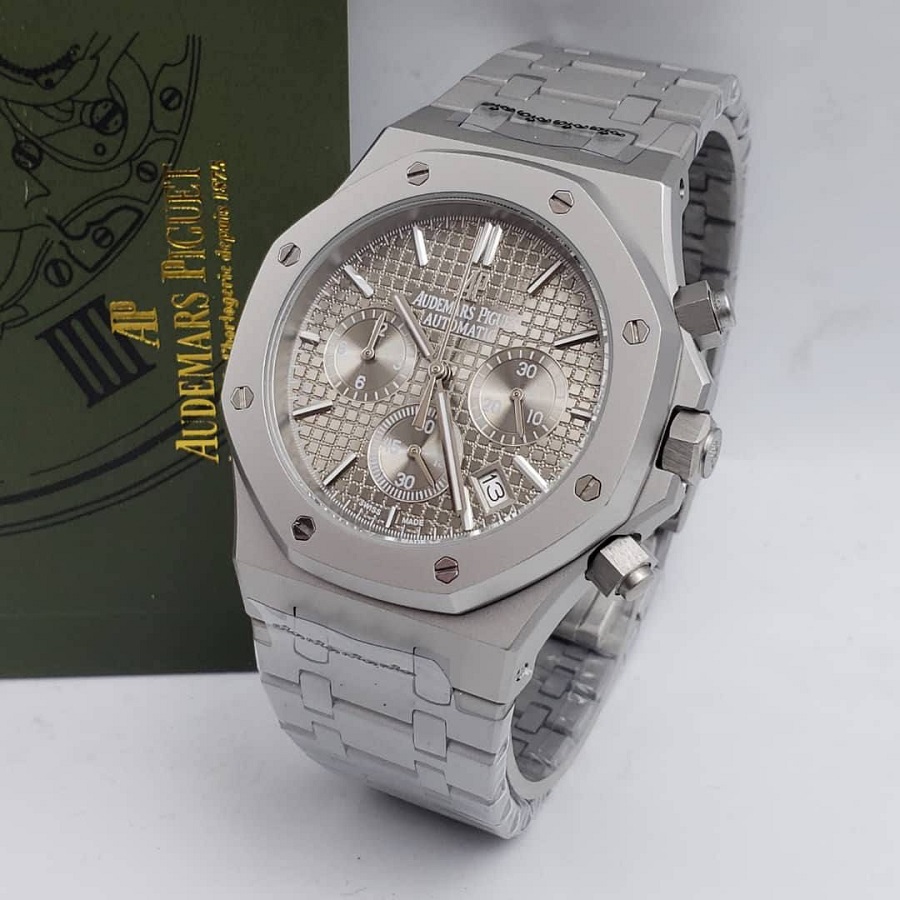Introduction
Wristwatch – The wristwatch, a timeless accessory that adorns wrists across the globe, has undergone a fascinating transformation since its inception. From humble beginnings as a practical tool for military officers to becoming a symbol of status and personal style, the journey of the wristwatch reflects not only advancements in technology but also shifts in societal values and aesthetics. This article delves into the historical evolution of wristwatches, exploring their transition from functional timekeepers to coveted fashion statements.
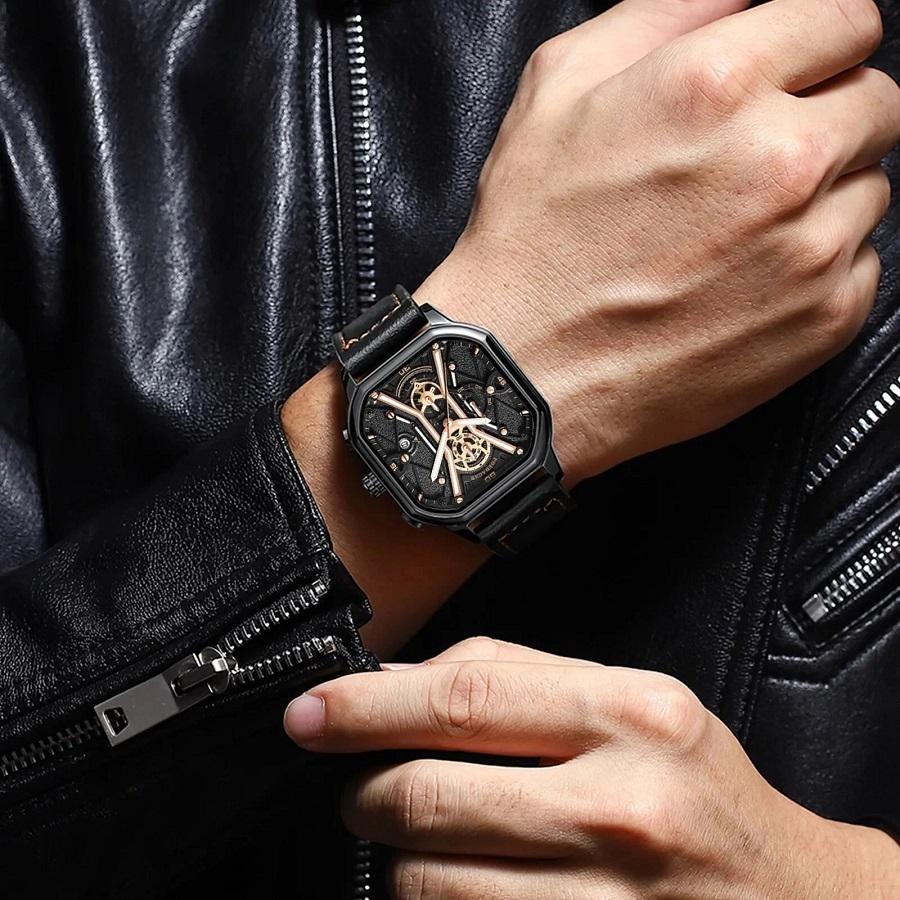
Early Origins: Practicality Takes Center Stage
The story of the modern wristwatch begins in the late 19th century, amidst the backdrop of industrialization and war. Prior to this period, pocket watches were the prevalent means of timekeeping. However, the impracticality of accessing a pocket watch during combat led to the innovation of the wrist-mounted timepiece. One of the earliest recorded instances is credited to Abraham-Louis Breguet, who created a wristwatch for the Queen of Naples in 1810. Yet, it wasn’t until the late 1800s when soldiers in the Boer War found that strapping pocket watches to their wrists increased efficiency, that the wristwatch gained wider recognition.
Military to Mainstream: A Shift in Perception
The First World War played a pivotal role in popularizing wristwatches among the masses. Dubbed “trench watches,” these early models featured luminous dials and rugged designs to withstand the harsh conditions of the battlefield. Upon returning home, soldiers continued to wear their wristwatches, sparking a cultural shift in how timepieces were perceived. No longer exclusive to the military, wristwatches became a symbol of a new, modern era, reflecting bravery, utility, and the changing roles of men in society.
Art Deco and the Rise of Style
The interwar period saw an explosion of creativity in design, with the Art Deco movement significantly influencing the aesthetic of wristwatches. Characterized by geometric shapes, bold colors, and luxurious materials like gold and diamonds, watches became more than just time-telling devices; they evolved into fashion accessories. Brands like Cartier, Rolex, and Patek Philippe introduced elegant and intricate designs that captured the spirit of the times, catering to an increasingly fashion-conscious public.
The Quartz Revolution: Technology Meets Style
In the late 1960s and 1970s, the advent of quartz technology revolutionized the watch industry. Quartz watches, powered by battery-operated electronic oscillators, offered unparalleled accuracy and affordability compared to their mechanical counterparts. This technological leap led to mass production, making wristwatches accessible to virtually everyone. While some purists mourned the decline of traditional craftsmanship, quartz watches paved the way for innovative designs and materials, further integrating watches into the world of fashion.
From Function to Fashion Statement
As we moved into the late 20th and early 21st centuries, wristwatches became even more diversified in style and purpose. Luxury brands continued to craft exquisite pieces adorned with precious metals and gems, catering to the elite who sought exclusive and collectible timepieces. At the same time, sports watches emerged, designed for specific activities like diving, racing, or aviation, appealing to adventurers and athletes.
Fashion collaborations and limited-edition releases blurred the lines between horology and high fashion, turning watches into wearable art. Smartwatches, introduced in the 2010s, added a new dimension to the wristwatch landscape, integrating technology like fitness tracking, phone connectivity, and even payment systems, demonstrating that functionality and fashion can coexist harmoniously.
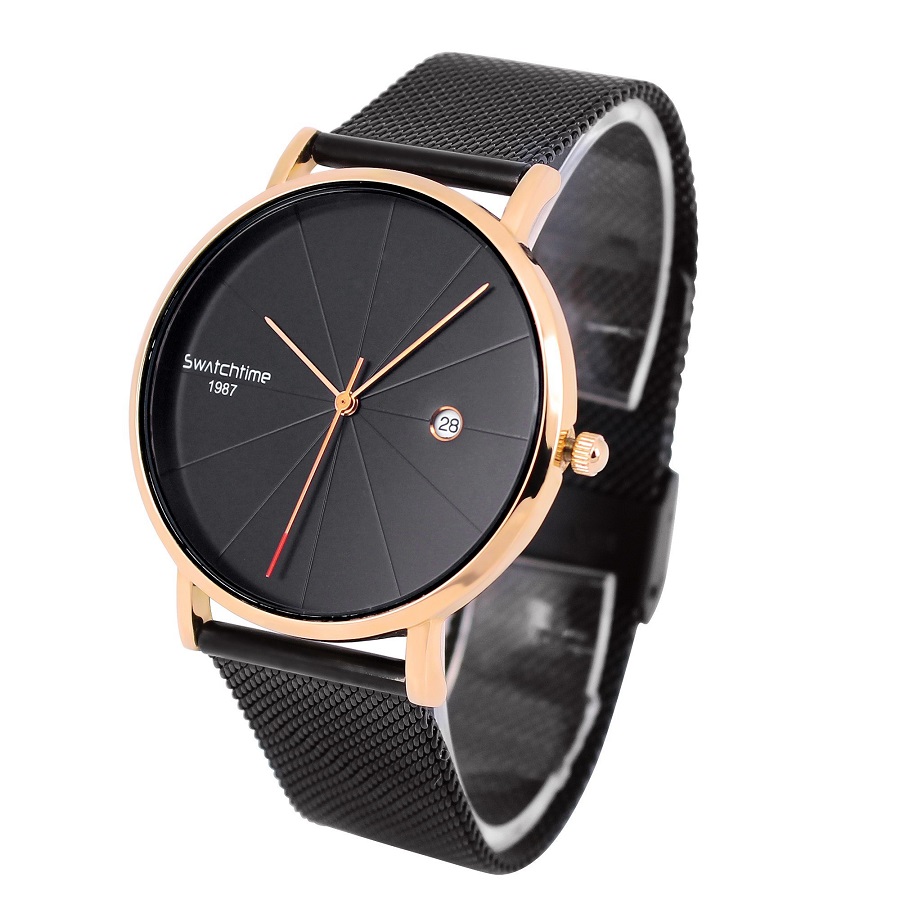
The Evolution of Timekeeping
To appreciate the significance of smartwatches, it’s crucial to understand their origins. From sundials to pocket watches, timepieces have always been a testament to human ingenuity. The wristwatch, initially designed for military use in the late 19th century, gained widespread popularity for its practicality. With the advent of quartz technology in the 1970s, watches became more accurate and affordable. However, it wasn’t until the digital age that wristwatches began to incorporate ‘smart’ features.
Beyond Timekeeping: The Birth of Smart Wristwatches
The first generation of smartwatches, introduced in the early 2000s, were rudimentary by today’s standards, offering basic functions like calculators and calendar alerts. The real game-changer arrived with the launch of devices like the Pebble Smartwatch in 2013, which could connect to smartphones, display notifications, and even run simple apps. Apple’s entry into the market with the Apple Watch in 2015 catapulted the smartwatch industry into the mainstream, setting new benchmarks for design, functionality, and integration with other smart devices.
Blending Technology
Modern smartwatches are marvels of miniaturization, packing a myriad of technologies into a device small enough to wear comfortably. Key features include:
- Health & Fitness Tracking: With heart rate monitors, GPS, and advanced sensors, these watches track everything from daily steps to sleep patterns, encouraging users to lead healthier lifestyles.
- Smart Notifications: Users can receive calls, texts, and app alerts directly on their wrist, ensuring they stay connected without constantly reaching for their phones.
- Voice Assistants: Integrated AI assistants like Siri or Google Assistant allow hands-free control over the watch and connected devices, enhancing convenience and accessibility.
- Mobile Payments: NFC technology enables contactless payments, turning the wristwatch into a wallet substitute.
- Customizable Interfaces: Users can personalize their watch faces and apps to reflect their style and needs, making each device unique.
Style Meets Substance
As much as functionality, style plays a pivotal role in the appeal of smartwatches. Designers have recognized the importance of aesthetics, offering a range of options to suit diverse tastes and occasions. From sporty silicone straps for workouts to elegant leather bands for formal settings, smartwatches now complement every outfit and lifestyle. Premium materials like stainless steel, titanium, and even precious metals are used to craft cases that not only withstand daily wear but also exude luxury.
The Future of Smart Wristwatches
Looking ahead, the future of smartwatches promises even greater integration with our digital ecosystems. Advancements in areas such as biometric sensing, extended battery life, and standalone connectivity (e.g., cellular connectivity) will further enhance their utility. Wearable technology is also exploring new frontiers in health monitoring, potentially detecting early signs of diseases and aiding in medical research.
Moreover, sustainability and eco-friendly materials are becoming important considerations for both manufacturers and consumers. As environmental awareness grows, we can expect to see more watches made from recycled materials and designed for longevity.
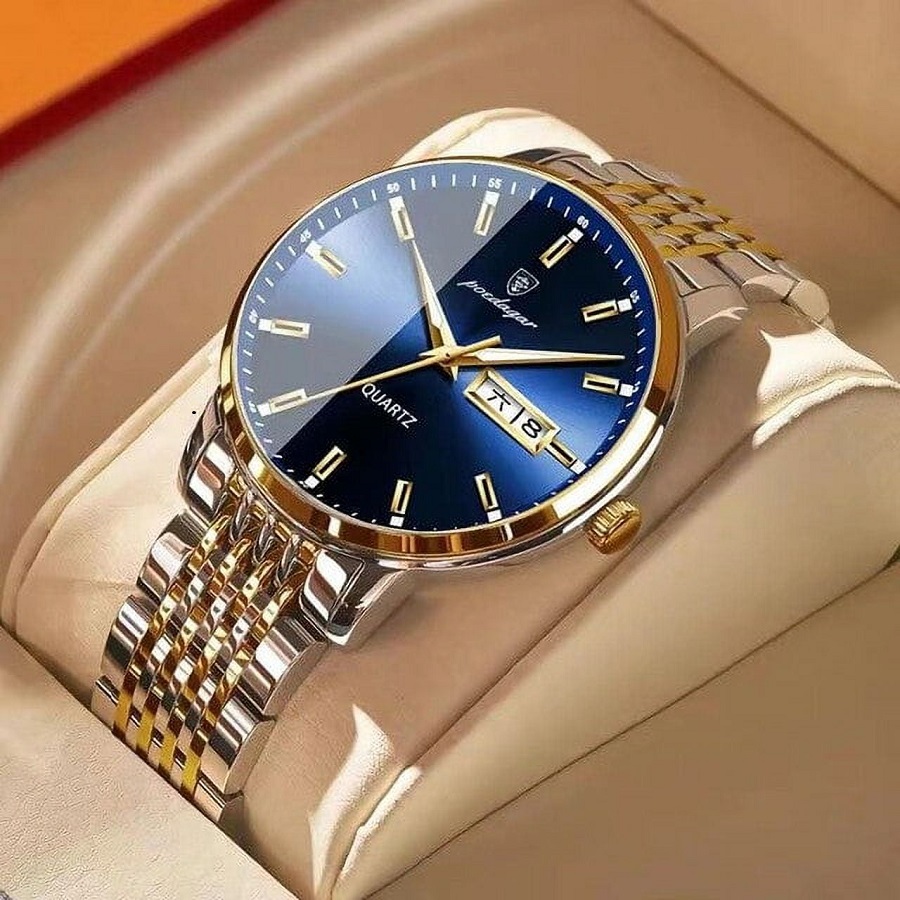
Rolex
Undoubtedly, Rolex remains at the pinnacle of luxury watchmaking. Synonymous with precision, reliability, and prestige, Rolex continues to innovate while staying true to its classic aesthetics. In 2024, the brand’s releases showcase advanced materials like Cerachrom bezels and proprietary Superlative Chronometer movements, further solidifying its position as the ultimate aspirational timepiece.
Patek Philippe
Patek Philippe is revered for its intricate complications and exquisite designs, often regarded as the epitome of Haute Horlogerie. Their watches, including the iconic Nautilus and the technically impressive Grand Complications series, are not merely timekeepers; they are investments and family heirlooms passed down through generations. Patek Philippe’s commitment to artistry and mechanical mastery ensures its dominance in the luxury segment.
Audemars Piguet
Renowned for the Royal Oak, a design that revolutionized luxury sports watches in 1972, Audemars Piguet continues to push boundaries with its avant-garde creations. The brand’s fusion of traditional craftsmanship with contemporary design and cutting-edge technology, such as the introduction of new materials like ceramic and titanium, cements its status as a leader in the industry.
Omega
Omega, with its rich history tied to space exploration and sports timing, offers a perfect blend of precision, performance, and elegance. The brand’s Master Chronometer certification, ensuring both COSC and METAS standards, sets a new benchmark for accuracy and magnetic resistance. Omega’s Seamaster, Speedmaster, and Constellation collections continue to captivate collectors and enthusiasts alike.
Cartier
Cartier, the jeweler of kings and the king of jewelers, brings its unique touch of elegance and sophistication to the world of luxury watches. Iconic models like the Tank, Santos, and Ballon Bleu showcase Cartier’s artful design and commitment to horological excellence. The brand’s ability to fuse jewelry-making expertise with watchmaking mastery keeps it at the forefront of the luxury market.
Vacheron Constantin
As the oldest continuously operating Swiss watch manufacturer, Vacheron Constantin embodies the essence of traditional Swiss watchmaking. Its watches, especially the intricate pieces from the Les Cabinotiers and Patrimony collections, exemplify the brand’s dedication to high complications and artistic crafts. The brand’s commitment to excellence and exclusivity makes it a favorite among collectors seeking the pinnacle of horological art.
Jaeger-LeCoultre
Famed for its inventive spirit and technical prowess, Jaeger-LeCoultre is often referred to as the “watchmaker’s watchmaker.” With over 1,200 calibers developed and a reputation for creating some of the most complex watches, Jaeger-LeCoultre’s offerings. Such as the Reverso and Master collections, are a testament to the brand’s unyielding pursuit of horological perfection.
Blancpain
Dedicated to crafting only mechanical watches, Blancpain is celebrated for its deep dive into traditional watchmaking while embracing innovation. The Fifty Fathoms, considered the first modern diver’s watch, and the sophisticated Metiers d’Art watches highlight Blancpain’s diverse capabilities. Its commitment to preserving watchmaking heritage while pushing boundaries solidifies its position among the elite.
A. Lange & Söhne
Representing the pinnacle of German watchmaking, A. Lange & Söhne combines meticulous attention to detail with mechanical ingenuity. Watches like the Datograph and Zeitwerk showcase the brand’s mastery of complicated movements and distinctive design language. Each piece is a work of art, reflecting the brand’s philosophy of “never stand still.”
Chanel
Chanel, known primarily for its fashion, has made significant strides in the world of haute horlogerie. The J12, with its ceramic construction and sleek design, redefined the concept of a ladies’ sports watch. Chanel’s continued investment in watchmaking, including the development of in-house movements, demonstrates its commitment to being taken seriously in this competitive arena.
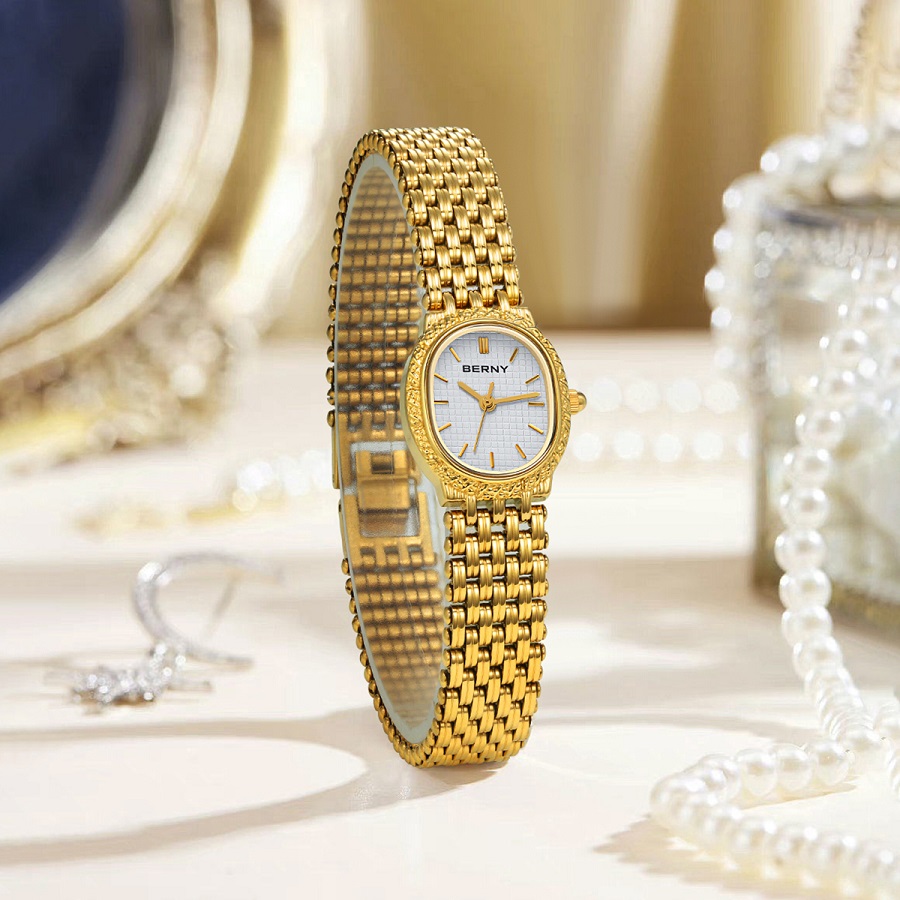
Conclusion
The evolution of wristwatches from functional tools to fashionable accessories mirrors humanity’s quest for innovation, expression, and individuality. From the trenches of war to the runways of Paris, wristwatches have transcended their primary function to become symbols of personal style, status, and technological prowess. As we continue to explore new frontiers in design and technology, the wristwatch stands as a testament to the enduring allure of blending form and function, reminding us that time, indeed, is a reflection of who we are and what we value.
